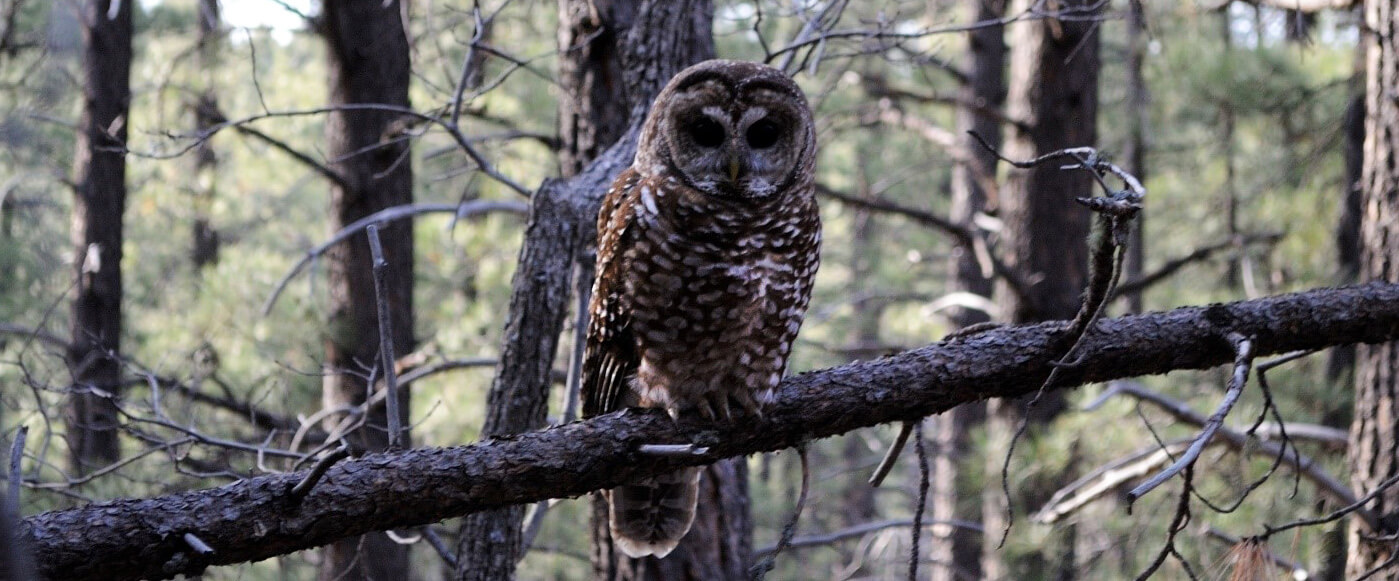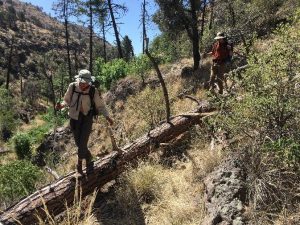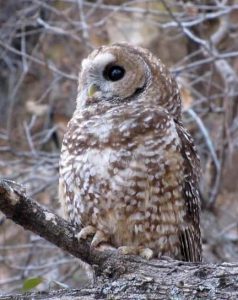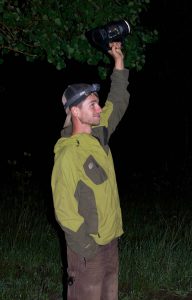
Project Overview
The Mexican Spotted Owl is one of three subspecies of Spotted Owl. In 1993, it was listed as threatened under the Endangered Species Act.
Like many threatened or endangered species, its population must be monitored to determine success in the recovery of the species. Bird Conservancy partners with the U.S. Forest Service to monitor the species for the purpose of tracking changes in the occupancy (i.e., presence across the landscape) of Mexican Spotted Owls over time. The vast majority of Mexican Spotted Owls in the United States inhabit National Forests in Arizona and New Mexico. From April to July, we spread out across 11 National Forests to survey predetermined sites in forests and steep canyons, which are favored Spotted Owl habitats.

Accessing survey sites is challenging due to rough terrain, poorly marked trails and roads, off-trail navigation, and potentially dangerous wildlife but rewards us with remarkable views and the opportunity to see and hear these amazing birds. The data we collect will ultimately be used to determine if and when the species no longer needs to be classified as a “threatened species.” In addition, our work has the potential to inform on-the-ground management decisions to protect Mexican Spotted Owls and promote their population growth.
Internship
This internship is ideal for individuals who have a strong passion for wildlife biology but are looking to gain field experience. Interns with the Mexican Spotted Owl program will get the opportunity to work alongside knowledgeable biologists while conducting nighttime surveys for Spotted Owls. Interns are fully integrated into our field work and get lots of hand-on experience collecting scientific data. Accessing our survey sites can be difficult and requires long hikes on- and off-trail, so interns must be in excellent physical fitness. In addition, the internship requires camping and working with one partner for 10-day periods. Our field season runs from April to mid-July and internships can occur at any point during our regular season with a minimum of a one-month commitment.

Learning Objectives
Interns can expect to gain the following knowledge and skills:
- Broadcast survey methodology
- Backcountry skills (i.e. camping, safety, backpacking, driving 4WD vehicles, etc.)
- Navigation with map, compass and GPS unit
- Data collection
- Spotted Owl ecology
- Basic occupancy monitoring and design
- Identification of nocturnal bird calls



 Donate
Donate